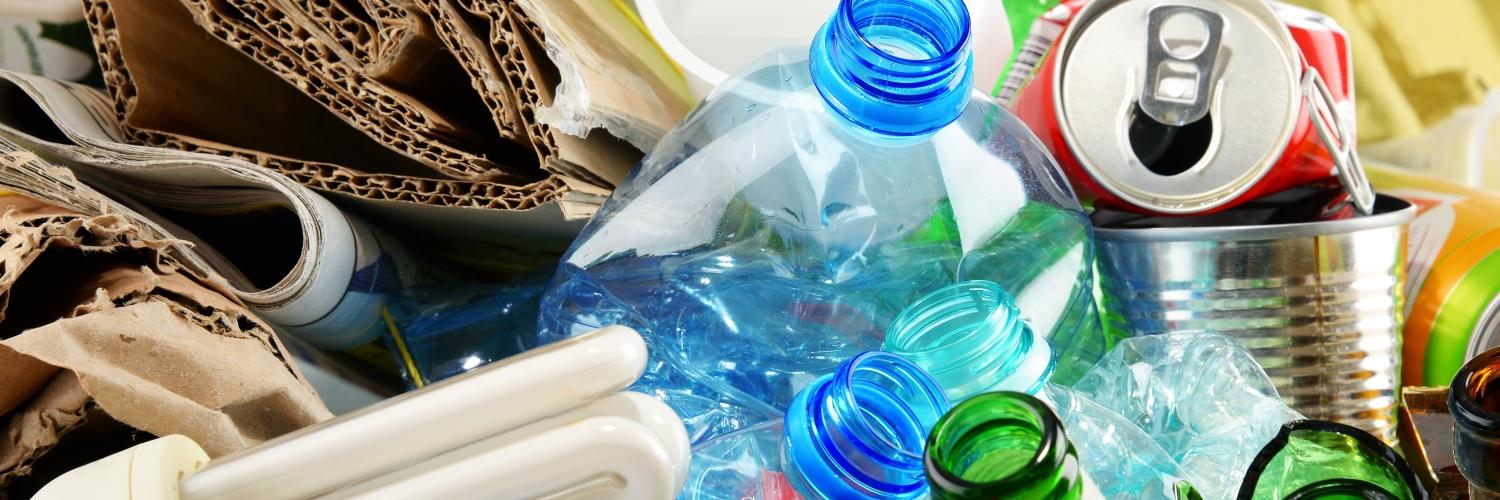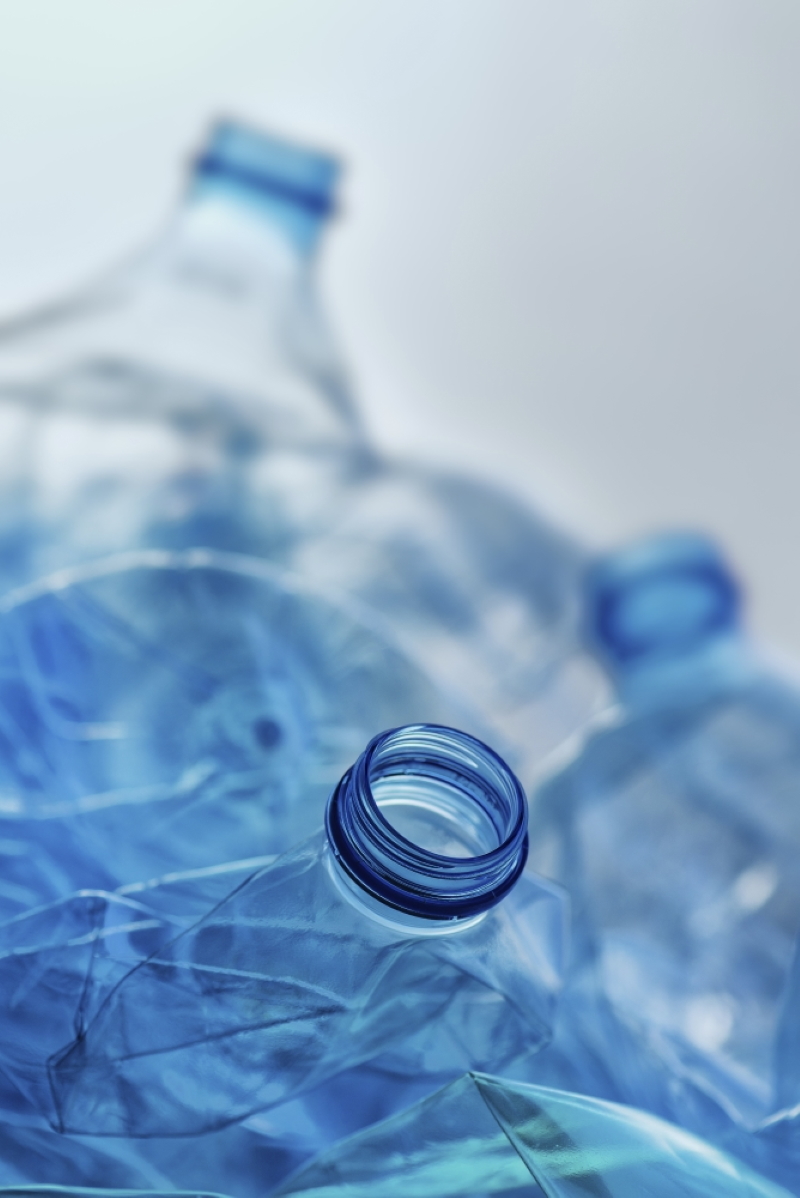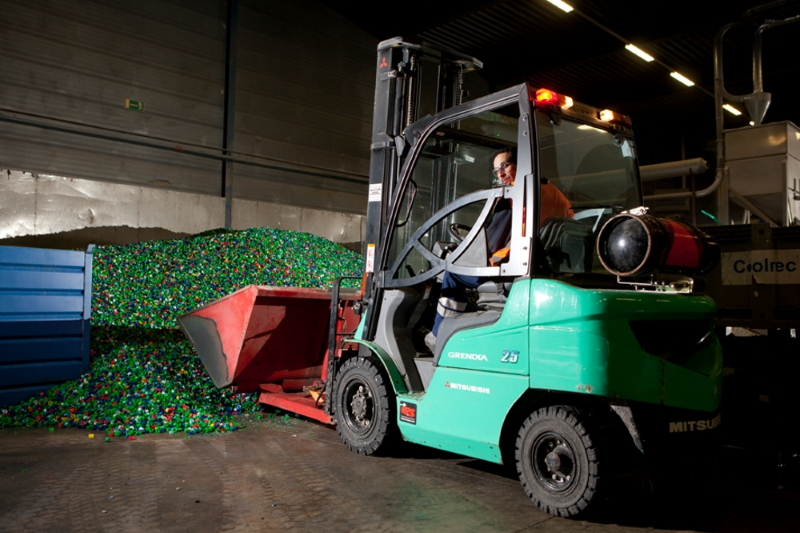
News
30 April 2019
Plastic recycling: leap in quality needed
Increasing contamination of collected plastic waste a risk to the circular economy
A circular economy requires a sharper focus on quality. Separating wastes only makes sense when the materials are actually recycled - and preferably to the highest possible standards. The DWMA is publishing a series of articles on the quality of waste streams. This first article is on plastic packaging waste.
The separate collection of plastic waste has really taken off in recent years. It was boosted four years ago, in 2015, by the introduction of PMD, the combined collection of plastic packaging, metal packaging and drink cartons. 'Quality is on the increase. In 2017, 65% of all plastic packaging put on the market was collected, including both household and commercial and industrial packaging waste,' says Daphne van den Berg, project leader at the Netherlands Institute for Sustainable Packaging (KIDV).
Daphne van den Berg (Netherlands Institute for Sustainable Packaging):
"There is much more demand for sorted monostreams than for mixed streams."

The contamination of the input stream to sorters has doubled to about twenty per cent
Falling quality
But while the volumes collected have risen, the quality of the material has declined. 'The bottom line is that just thirty per cent of all packaging on the market is properly recycled. That is not much. An additional 40% of the sorted plastic enters a mixed stream, which does get a new life, but "only" as roadside posts or construction board. There is much more demand for sorted monostreams such as PET, PP or PE. These are more valuable and have a wider range of potential uses,' says Van den Berg.
Residual stream doubled
All sorters in the Netherlands are saying that the quality of their input streams is visibly falling. Since the start of plastic waste collection in 2008, Eugene Rudolf, plastics manager at Veolia, has been keeping track of the relevant data. He has seen a doubling of the residual stream. 'Contamination levels used to be around 10%, but now they are almost 20%, although this varies considerably between municipalities.'
Eugene Rudolf (Veolia):
"Reverse collection, DIFTAR and PMD lead to greater levels of contamination."
New collection systems to blame
Rudolf points to the recent changes in collection systems as the main culprit. Spurred on by ambitious government targets - 75% separate collection and no more than 100 kg residual waste per inhabitant by 2020 - many municipalities have switched to systems such as 'reverse collection', in which people have to take their residual waste to a local collection centre rather than their recyclable waste. 'This system contains an in-built incentive for misuse. Reverse collection, DIFTAR and PMD lead to greater levels of contamination. Adding drink cartons and metals only confuses people and leads to sloppiness.'
Measures to improve quality
Collection
- Make quality a key consideration in the choice of collection system.
- Provide clear information to residents on a regular basis.
- Put more emphasis on quality when contracting out municipal waste collection services.
- Monitor the quality of the collected material. Numbers don't lie.
- Reward municipalities that prioritise quality.
Sorting/recycling
- Introduce quality specifications to improve quality and potential uses.
- Provide financial incentives so that sorting companies that emphasise quality are rewarded.
Production of packaging
- Design plastic packaging that is easy to recycle.
- Use secondary raw materials in the manufacture of new plastic packaging.
Users of packaging
- Create new and bigger markets for recycled materials.
- The public sector to play an active part as launching customer.
Blockages
Hein Grafhorst, recycling director at Omrin, sounds the alarm. He sees the fall-off in quality as a worrying trend. Municipal waste policies concentrate too much on the quantities collected, he says. 'Quality and quantity should go hand in hand. There has to be a balance, so that the collected plastic packaging waste is properly recycled.' In its new plastics sorting plant in Heerenveen, where Omrin sorts both source-separated and post-separated materials, the lower quality leads to higher loss rates and higher costs. 'Large pieces of plastic film, netting and video tapes don't belong among the collected material and in our plant they cause blockages.'
Hein Grafhorst (Omrin):
"Municipal waste policies concentrate too much on the quantities collected."
Flaw in the system
Quality is not determined by householders and collection systems alone, but by sorting companies as well. Rudolf observes that there is an inherent flaw in the current remuneration system. 'Municipalities and sorters are paid for each tonne of recyclate - the amount of material that actually goes for recycling - irrespective of the quality. More critical sorting leads to a bigger residual stream and smaller payments to municipalities and sorters. The remuneration from the Packaging Waste Fund is the same for a high value monostream as a low quality mixed stream. This is a perverse hidden incentive to sort to a lower standard.' Rudolf would like to see a new remuneration system that rewards higher standards of recycling.
Market driven
The current quality specifications for sorting which form the basis for the collection and sorting payments, the DKR specifications, are currently being revised. Van den Berg of the KIDV: 'Sorting companies have opportunities to raise standards. The quality specifications should better reflect the demand.' The market demands quality raw materials, sufficient volumes and competitive rates, adds Grafhorst. 'Better quality means better marketability and higher prices for the raw materials. There is particular concern at the moment about the market for plastic films and mixed streams. The less contaminated the materials are, the greater the range of potential uses they have.'

Just thirty per cent of all packaging on the market is properly recycled (photo: DWMA / Norbert Bosman©)
End of chain
Rudolf believes the producers and users at the end of the value chain have an important part to play in improving quality. 'The demand for recycled material has to be much higher. For volumes to grow we have to break into new markets. The best opportunities are in the higher quality segment of the market, and that means that the collected material must be of better quality.'
Recyclability
There is also a massive opportunity to improve quality at the very beginning of the chain, where the packaging is designed. About 30% of plastic packaging waste cannot be recycled at all. Stand-out examples of this, says Grafhorst, are composite and black plastics, which are not recognised by all sorting plants. The same goes for drinking chocolate bottles with wrap-around labels, which deceive the sorting system into sending them to the residual waste stream. Without a label they do end up in our monostream.' The waste sector calls on producers and designers to use plastic packaging that is easy to recycle.
Henk Triemstra (Municipality of Noordenveld):
"We manage to keep the contamination levels of our PMD down to two or three per cent."
Noordenveld as shining example
High quality waste collection is perfectly possible, as shown by the municipality of Noordenveld, one of the leaders in the field. 'Since 2010 we have been collecting plastic packaging waste from households in transparent bags,' says Henk Triemstra, wastes policy officer at Noordenveld municipal council. The bags are for PMD waste (plastic packaging, metal packaging and drink cartons) and sorters are pleased with the quality of the contents. 'We manage to keep the contamination levels of our PMD down to two or three per cent.' In 2015 - when municipalities became responsible for sorting and recycling as well as collecting recyclables - Noordenveld left its collection system as it was. Other municipalities in the province introduced small wheelie bins. The result was more material for recycling, but the quality declined. 'People get sloppy when they are issued with bins. They throw things in that don't belong in there.' With transparent PMD bags the contents are visible, adds Triemstra's colleague Bouwe Wierdsma. 'Our people on the refuse vehicle can see and feel what's in the bag. If it's not right, they leave it there and put a sticker on it. This method works.' Hardly any of Noordenveld's plastic is rejected, and that means more income for the municipality. Triemstra: 'The municipality gets paid for each tonne of recyclable waste. We don't receive any payment for rejected loads. Not only do rejections mean less income from the Packaging Waste Fund, but the rejected material then has to be incinerated in a waste-to-energy plant.'
Bouwe Wierdsma (Municipality of Noordenveld):
"The contents of our PMD bags are visible."
